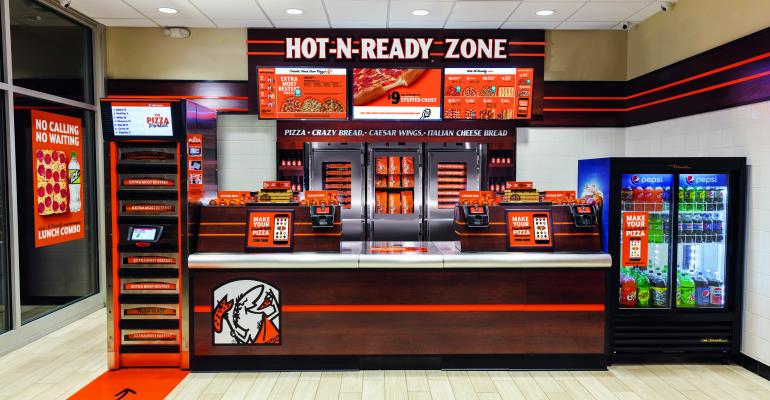Before Feb. 2020, Little Caesars — the third-largest pizza chain in the United States and globally — only offered pickup for customers. But with the introduction of the brand’s new mobile app in 2019 and delivery (along with a DoorDash partnership) right before the pandemic began, Little Caesars has accelerated its new growth strategy.
Most recently, the Detroit-based pizza chain has set its sights on infiltrating the St. Louis market, with a goal of eventually opening 35 new stores (10 of which will open before 2024) in the area. Other areas of opportunity include New York, Charlotte, Tampa, New Orleans and the entire Pacific Northwest Region.
“We were different than the other large pizza chains because we didn’t have delivery,” Jeremy Vitaro, who was named Little Caesars chief development officer in April, said. “We thought we were convenient for customers, but technology has really enabled us to become a lot more convenient. And through our app, we’re able to connect with customers more effectively.”
Vitaro pointed out that with the mobile app, customers can easily customize their pizzas, which they had not been able to do before and has become a crucial “get” for digital ordering. The pizza portal, which they introduced in 2019, allows customers to order ahead and pick up their pizza with a code when their order is ready.
Where technology and development intersect, Vitaro said, is with their goal of connecting with people in new ways –whether that’s opening in a new market or offering more convenient digital experiences for customers.
“We've seen really great success in connecting with consumers during the pandemic at a time when there was much more focus on convenience and contactless,” he said. “In that sense, we adopted well and we’re fortunate to have deployed that strategy.”
While the real estate landscape and well of franchisees have changed over the past 18 months, Vitaro is confident that they can stay competitive with other pizza chains like Domino’s, Pizza Hut and Papa John’s, especially as the pizza category continues to maintain strength at this point in the pandemic. The best thing they can do, he said, is to continue investing in technology and find perfect matches for multi-unit franchisees.
“We want to continue using technology in our restaurants,” Vitaro said. “Consumer-facing technology like kiosks and other new ways to order. we're looking at how continue to use technology within the within the restaurants. […] we’re continuing to modernize and evolve.”
Contact Joanna at [email protected]
Find her on Twitter: @JoannaFantozzi

